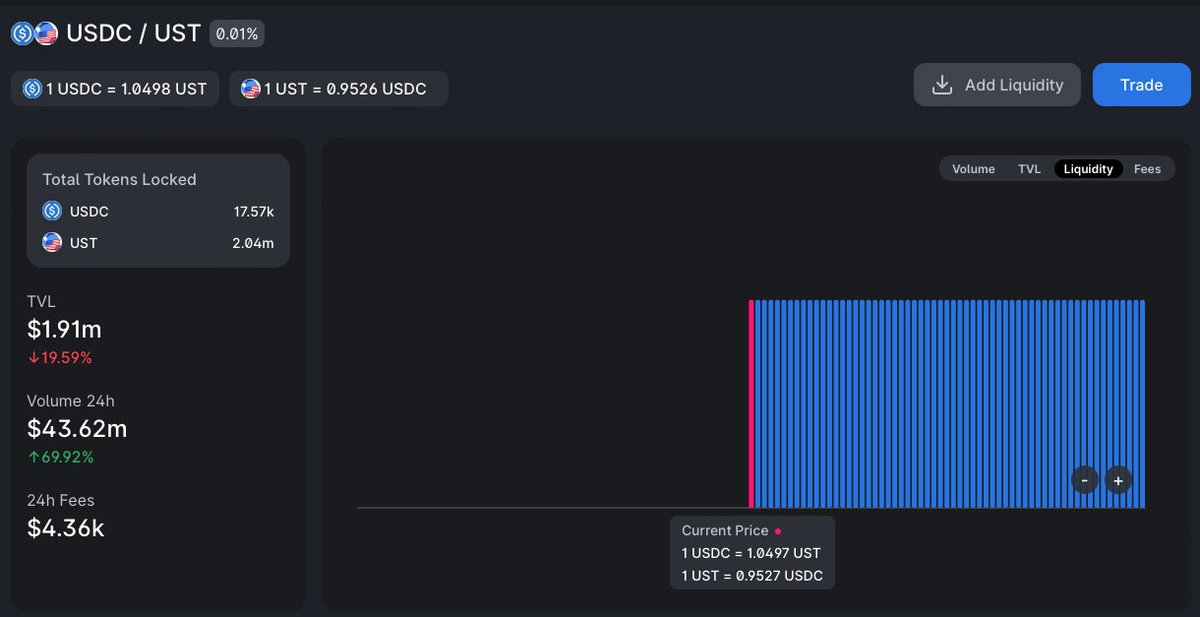
1/ IMO there's essentially no way to make the economics of an on-chain order book sustainable. At least in a general purpose chain
IMO the only solution is an order book specific appchain with application aware pricing. A general purpose chain can't profitably host an order book
IMO the only solution is an order book specific appchain with application aware pricing. A general purpose chain can't profitably host an order book
2/ The issue comes down to order books requiring a tremendous stream of "rebalancing activity" by specialists to create efficient markets and provide reliable liquidity to organic users.
In modern TradFi, the ratio of HFT messaging to organic activity is at least 25:1
In modern TradFi, the ratio of HFT messaging to organic activity is at least 25:1
3/ Which means unlike an AMM, where liquidity providers typically execute fewer transactions than swappers, order books require huge and constant transaction throughput to effectively operate
So, we just have to make a hyper-scalable blockchain with cheap transactions, right?
So, we just have to make a hyper-scalable blockchain with cheap transactions, right?
4/ But that creates a problem for the economics of the chain itself. Value accrual to L1 tokens relies on extracting meaningful fees from organic users
Many of us (me included) once thought blockspace supply creates its own demand. Make up for cheap txs on volume. We were wrong
Many of us (me included) once thought blockspace supply creates its own demand. Make up for cheap txs on volume. We were wrong
5/ Crypto is now awash in "dark blockspace". Besides Eth, the vast majority of available blockspace is unused. Even BSC, with its hyper-activity, only fills 18% of its space
The reality is demand is painfully limited. Price cuts below $0.02-ish induce no marginal organic demand
The reality is demand is painfully limited. Price cuts below $0.02-ish induce no marginal organic demand
6/ A chain with sub-penny transactions for organic users simply has no path to meaningful value accrual for tokenholders in the current climate. (At least until the market finds radical new ways to raise blockspace demand.)
7/ This is why Solana, despite its amazing technology, is working with an extremely broken value accrual model. The fees are *too cheap* for the business model to make sense.
Sol executes a huge number of txs, but only collects $6k/day in fees. About on par with Fantom
Sol executes a huge number of txs, but only collects $6k/day in fees. About on par with Fantom

8/ The current model isn't even enough value accrual to pay the hosting bill for the validators. Let alone secure a multi-billion dollar network
The solution is ostensibly simple. Raise fees by a factor of 50 to one penny-ish. Not one organic user in a hundred would even notice
The solution is ostensibly simple. Raise fees by a factor of 50 to one penny-ish. Not one organic user in a hundred would even notice
9/ The very painful part is it would entail breaking the order book apps that are entrenched at the heart of its ecosystem
The vast majority of Solana transactions are not organic, but market makers, bots and oracle updates that work to keep the order books liquid and efficient
The vast majority of Solana transactions are not organic, but market makers, bots and oracle updates that work to keep the order books liquid and efficient

10/ None of those supporting actors can remain profitable anywhere near a penny per transaction.
And this comes down to why on-chain order books are fundamentally broken. To achieve value accrual L1s require much more expensive transactions than HFT and market makers can afford
And this comes down to why on-chain order books are fundamentally broken. To achieve value accrual L1s require much more expensive transactions than HFT and market makers can afford
11/ CEXs avoid this by explicitly price discriminating between organic flow and HFT flow, charging the former much less. But an app-agnostic on-chain VM barely even sees any difference between a market order (very expensive in CEXs) and a limit cancel (almost always free in CEXs)
12/ That's why I believe on-chain order books can achieve sustainable economics in an app chain context.
That's because L1 fees can specifically reflect the subtleties of order book economics. For example giving HFTs that do large volume steep gas fee discounts.
That's because L1 fees can specifically reflect the subtleties of order book economics. For example giving HFTs that do large volume steep gas fee discounts.
• • •
Missing some Tweet in this thread? You can try to
force a refresh





